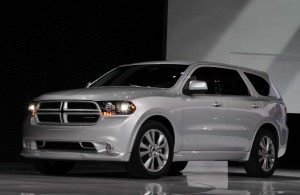New car shoppers will find some good news and bad in the latest Initial Quality Study: the quality of all-new 2011 models “declined considerably”, but the quality of carryover products was better than ever, according to from Power and Associates.
Japanese automakers, led by Toyota’s Lexus luxury brand, dominated this year’s Initial Quality Study, or IQS, which measures problems with new vehicles during the first 90 days of ownership. Honda jumped to second in the annual survey, but the biggest improvement was posted by perennial quality laggard Land Rover.
Significantly, after nearly matching the quality of the top Japanese brands just a year ago, Detroit’s Big Three makers slipped markedly in the 2011 IQS, but Detroit slipped in the latest study – in part due to problems with new technologies, such as the Ford Sync system.
A variety of issues led to the unexpectedly poor performance of all-new 2011 models – the first time since 2006 that newly-launched products haven’t improved in quality compared to the vehicles they replaced. The most notable were engine/transmission problems, according to Power Vice President David Sargent. But there were also significant issues with the latest audio/entertainment and navigation systems.
“Clearly, consumers are interested in having new technology in their vehicles, but automakers must ensure that the technology is ready for prime time,” said Sargent, Power’s head of global vehicle research. “Successful companies will be those that can take this incredibly complex technology and make it reliable, seamless and easy for owners to operate while they are driving. There is an understandable desire to bring these technologies to market quickly, but automakers must be careful to walk before they run.”
Overall, the industry continued to post gains in quality, a critical competitive area. On the whole, the industry averaged 107 problems for every 100 vehicles included in the 2011 study, down from 109 the year before. But the defect count rose to 122 problems per 100 vehicles, or PP100, when limited to all-new vehicles or those that underwent a significant redesign for the 2011 model-year. A year ago, similarly new or updated offerings averaged 111 problems.
Focusing on carryover models alone, the problem count dropped to a record-low 103 compared with 108 PP100 in the 2010 IQS.
In today’s competitive market, where many buyers are looking for the newest and hottest offerings, the problems the industry is experiencing with all-new products is a concern, according to Sargent, who cautions, “Expected reliability continues to be the single-most-important reason why new-vehicle buyers choose one model over another, and no manufacturer can afford to give consumers any doubts regarding the quality of their latest products.”
With just 73 problems per 100 vehicles, Lexus handily led the industry in the latest Power study of out-of-the-factory quality, but Honda jumped from sixth to 2nd place, followed by its luxury arm, Acura. Mercedes-Benz, ranked fourth, was the only non-Japanese brand in the Top 5, Mazda rounding that group out by jumping from 18th, in 2010, to number five.
Notably, the highest-ranking Detroit brand was Cadillac, at ninth, followed by sibling General Motors division GMC. Ford, which rose to fifth last year — becoming the highest-ranking mainstream marque, tumbled to 23rd in the 2011 IQS.
“The imports have re-established a quality gap over domestics,” said Sargent.
Ford’s tumble was largely the result of problems with its ambitious commitment to high-tech infotainment systems, such as Sync and the new MyFordTouch, a voice controlled technology that has been criticized for being difficult to operate. And that, noted the Power analyst, raises an intriguing conundrum for the auto industry. Makers see digital technologies as a critical way to differentiate their products — but while systems like Sync and the BMW iDrive might appeal to techies they can also turn off some less tech-savvy motorists .
“In terms of driving sales in the short-term,” said Sargent, they can be very effective, but if they create problems, owners may switch to other brands when they eventually trade-in. “Automakers have to make the decision whether they want to be on the leading edge.”
In individual product segments, Honda captured seven awards for products including the Accord, Civic and Insight. Lexus took four segment awards for its ES, GS, GX and LS models. The latter, the brand’s flagship, recorded just 54 problems per 100.
While domestic makers were shut out of the Top 5, Chevrolet and Ford each received two segment awards, as did Mercedes-Benz. Other single-segment winners were Cadillac, Chrysler, Dodge and Mazda.
While Land Rover might not have landed any segment awards it did improve its quality numbers substantial. Compared to 2010, it had 47 fewer problems per 100 according to the latest IQS.
Not all new models lost ground, according to Power, which described the freshly-launched Hyundai Equus luxury sedan and Dodge Durango SUV as “notably strong performers, each ranking second in their individual segments.”
A decade ago, even the best manufacturers experienced significantly more problems than the worst makers in the 2011 study. So, does a quality study like the IQS matter anymore? Sargent insisted it does, pointing to data showing quality and reliability top the list when it comes to attributes that would get the typical buyer to choose between two brands making otherwise similar cars. And the lower a maker does in the IQS, typically, the poorer its owner loyalty — which translates into fewer repeat buyers.
The 2011 IQS was compiled from survey forms filled out between February and March by 73,000 new car buyers. They were asked 228 questions about the quality of their vehicles after 90 days of ownership.

